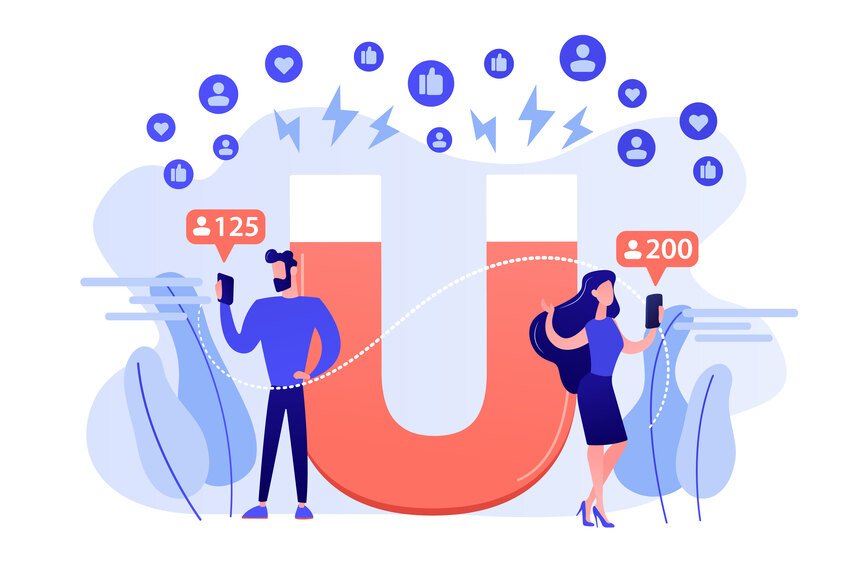Lead generation campaigns can make or break your marketing efforts. The difference between a campaign that delivers qualified leads and one that burns through budget lies in one critical factor: targeting the right audience. Without precise audience targeting, even the most creative campaigns fall flat, generating clicks that never convert and engagement that never translates to revenue.
Understanding who needs your product or service—and how to reach them effectively—transforms your marketing from a guessing game into a strategic advantage. When you discover our approach to audience targeting, you’ll see how data-driven insights and strategic segmentation create campaigns that consistently deliver qualified leads.
Understanding Your Ideal Customer Profile
Before launching any lead generation campaign, you need a crystal-clear picture of your ideal customer. This goes beyond basic demographics like age and location. Your ideal customer profile should encompass behavioral patterns, pain points, decision-making processes, and communication preferences.
Start by analyzing your existing customer base. Look at your most valuable clients—those who generate the highest lifetime value, refer others, or require minimal support. What characteristics do they share? Which industries do they represent? What roles do they hold within their organizations?
Customer interviews provide invaluable insights that data alone cannot reveal. Schedule conversations with recent customers to understand their journey from awareness to purchase. Ask about their challenges, research process, and what ultimately influenced their decision. These conversations often uncover unexpected motivations and concerns that can reshape your targeting strategy.
Your sales team possesses crucial intelligence about prospect behaviors and objections. They interact with potential customers daily and understand which messaging resonates and which falls flat. Regular alignment sessions between marketing and sales teams ensure your targeting strategy reflects real-world customer interactions.
Leveraging Data for Audience Insights
Modern marketers have access to unprecedented amounts of customer data. The key lies in transforming this data into actionable audience insights. Website analytics reveal visitor behavior patterns, showing which content attracts potential customers and where they lose interest in your sales funnel.
Social media platforms provide detailed demographic and interest data about your followers and engagement patterns. This information helps identify characteristics of people genuinely interested in your content versus passive observers. Look for patterns in engagement rates across different audience segments to understand which groups show genuine purchase intent.
Customer relationship management systems contain behavioral data that reveals how different audience segments interact with your brand over time. Analyze email engagement rates, content consumption patterns, and conversion paths to identify high-value audience characteristics.
Third-party data sources can expand your understanding of market segments and industry trends. Research reports, industry publications, and competitive analysis provide context for your own data findings. When you discover our approach to combining first-party data with market intelligence, you create a comprehensive view of your target audience landscape.
Segmentation Strategies That Drive Results
Effective audience segmentation goes beyond traditional demographic categories. Behavioral segmentation often proves more predictive of purchase intent than age or location alone. Consider segmenting audiences based on their engagement level with your content, previous purchase behavior, or stage in the buying journey.
Firmographic segmentation applies to B2B lead generation, focusing on company characteristics like industry, size, revenue, and growth stage. A software solution targeting enterprise companies requires different messaging than one designed for startups. Understanding these distinctions allows you to craft relevant campaigns that speak directly to specific business contexts.
Psychographic segmentation considers values, attitudes, and lifestyle factors that influence purchasing decisions. A productivity tool might appeal differently to efficiency-focused professionals versus creative individuals seeking work-life balance. These psychological factors often drive purchase decisions more than demographic characteristics.
Geographic segmentation remains relevant, especially for businesses with regional variations in product availability, pricing, or cultural preferences. However, modern geographic segmentation should consider digital behaviors and online communities rather than just physical location.
Personalization at Scale
Once you’ve identified and segmented your target audience, personalization transforms your campaigns from generic broadcasts into relevant conversations. Dynamic content allows you to customize messaging, offers, and creative elements based on audience characteristics without creating dozens of separate campaigns.
Email marketing platforms enable sophisticated personalization based on subscriber behavior and preferences. Beyond using first names, consider personalizing subject lines, content recommendations, and call-to-action buttons based on past engagement patterns. Subscribers who consistently click on product demos might receive different messaging than those who prefer educational content.
Website personalization adapts your site experience based on visitor characteristics and behavior. First-time visitors might see introductory content and social proof, while returning visitors could see advanced features or special offers. This approach increases relevance and reduces friction in the conversion process.
Social media advertising platforms offer granular targeting options that enable personalization at massive scale. Custom audiences based on website visitors, email subscribers, or lookalike modeling help you reach people most likely to convert. When you discover our approach to audience layering, you can combine multiple targeting criteria for precision without sacrificing reach.
Testing and Optimization Strategies
Audience targeting requires continuous testing and refinement. A/B testing different audience segments reveals which groups respond best to specific messaging, offers, or creative approaches. Start with broad tests comparing major demographic or behavioral segments, then narrow down to specific characteristics that drive performance differences.
Multi-variate testing allows you to test multiple audience variables simultaneously, providing insights into how different targeting criteria interact. For example, you might discover that industry targeting performs well for certain job titles but not others, leading to more nuanced audience definitions.
Performance metrics should align with your lead generation goals. While click-through rates indicate audience interest, conversion rates and lead quality metrics matter more for campaign success. Track metrics throughout the entire funnel, from initial engagement through closed sales, to understand which audience segments generate the highest return on investment.
Campaign timing affects different audience segments differently. B2B audiences might respond better during business hours and weekdays, while consumer audiences could show higher engagement during evenings and weekends. Test different scheduling strategies across audience segments to optimize campaign delivery.
Technology and Tools for Audience Targeting
Marketing automation platforms integrate audience data from multiple sources, enabling sophisticated targeting workflows. These tools track prospect behavior across touchpoints and automatically adjust messaging based on engagement patterns. Advanced automation can nurture different audience segments with personalized content sequences that adapt to individual responses.
Customer data platforms unify audience data from various sources, creating comprehensive customer profiles that inform targeting decisions. These platforms break down data silos and provide a single source of truth for audience insights across all marketing channels.
Analytics tools provide real-time insights into audience behavior and campaign performance. Beyond basic reporting, look for platforms that offer predictive analytics and audience modeling capabilities. These features help identify high-value prospects before they engage with your campaigns.
When you discover our approach to tool integration, you’ll understand how connected marketing technology creates seamless audience experiences across all touchpoints. The right technology stack amplifies your targeting efforts by automating data collection, analysis, and campaign optimization.
Measuring Success and ROI
Successful audience targeting requires clear measurement frameworks that connect campaign activities to business outcomes. Lead quality metrics matter more than lead quantity—a smaller number of highly qualified leads often generates better ROI than a large volume of unqualified prospects.
Attribution modeling helps you understand how different touchpoints contribute to conversions across your target audience segments. Some audiences might require multiple touchpoints before converting, while others respond to direct approaches. Understanding these patterns helps optimize budget allocation and campaign sequencing.
Customer acquisition cost varies significantly across audience segments. Track acquisition costs by segment to identify the most efficient targeting approaches. Higher acquisition costs might be justified for segments with higher lifetime value or better retention rates.
Long-term performance tracking reveals how different audience segments perform beyond initial conversion. Some audiences might convert quickly but churn rapidly, while others require longer sales cycles but generate steady revenue. These insights inform both short-term campaign optimization and long-term business strategy.
Conclusion
Targeting the right audience transforms lead generation campaigns from expensive experiments into predictable revenue drivers. Success requires deep customer understanding, strategic segmentation, personalized messaging, and continuous optimization based on performance data.
The most effective campaigns combine multiple data sources, advanced segmentation strategies, and personalization technologies to create relevant experiences for specific audience segments. When you discover our approach to integrated audience targeting, you gain the framework for building campaigns that consistently deliver qualified leads and measurable ROI.
Start by auditing your current audience targeting strategies and identifying gaps in your customer understanding. Implement systematic testing processes to validate assumptions and optimize performance continuously. With the right approach to audience targeting, your lead generation campaigns become powerful engines for sustainable business growth.
Read Dive is a leading technology blog focusing on different domains like Blockchain, AI, Chatbot, Fintech, Health Tech, Software Development and Testing. For guest blogging, please feel free to contact at readdive@gmail.com.





